
As mentioned in recent posts, the shady understory of forests is normally not the optimal environment for grasses. And yet, many from an entire subfamily of the Poaceae (the Bamboos of subfamily Bambusoideae) and others such as species from genus Oplismenus (e.g. the invasive Oplismenus undulatifolius) and Microstegium (e.g. the invasive Microstegium vimineum) have adapted well to this area of low light. During a trip to South Florida this week, I made trips to nearby parks and preserves in search of two other grass species that have made the forest understory their home.
The first trip was to a park in the nearby Florida keys, where I literally spent a good part of the time running for my life from swarms of aggressive Floridian mosquitoes. In between bouts of dancing around, frantically trying to dislodge the blood sucking mini Vampires, I finally happened upon a single specimen of Lasiacis divaricata, which is called “wildcane” locally.
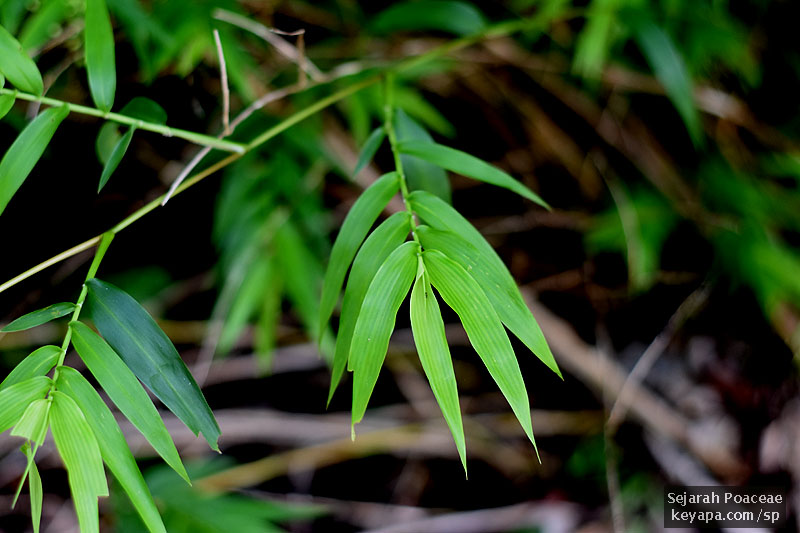
The grass was climbing up a shrub along the path’s edge, and looked remarkably like its bamboo brethren, so much so that at first I was wondering whether I had stumbled on a species from the Bambusoideae. But this species is actually from the subfamily Panicoideae, and uses the less energy intensive C3 photosynthesis to make its living in shady subtropical and tropical forest understories. It loves moist rich soil, and its native range extends from Florida to the Caribbean and Venezuela. Like many shade loving grasses, its leaves would not immediately alert a casual onlooker to its identity as a grass. The blades were somewhat wide and long, tapering to a point, and most would probably be like me and think it was some bamboo.

That first discovery helped solidify the search image of this species in my mind, and as I walked briskly along the narrow path and deeper into the hot and humid park, I was able to quickly spot more specimens along the path edges. Taking photographs of these specimens proved more difficult however, as any time I stopped at any one spot to take my photos, I would be immediately hounded by the infernal mosquitoes, who were actually able to pierce through my shirt (and pants!), and who seemed to take it as a challenge to ignore the insect repellent that I had slathered onto my hands and face.
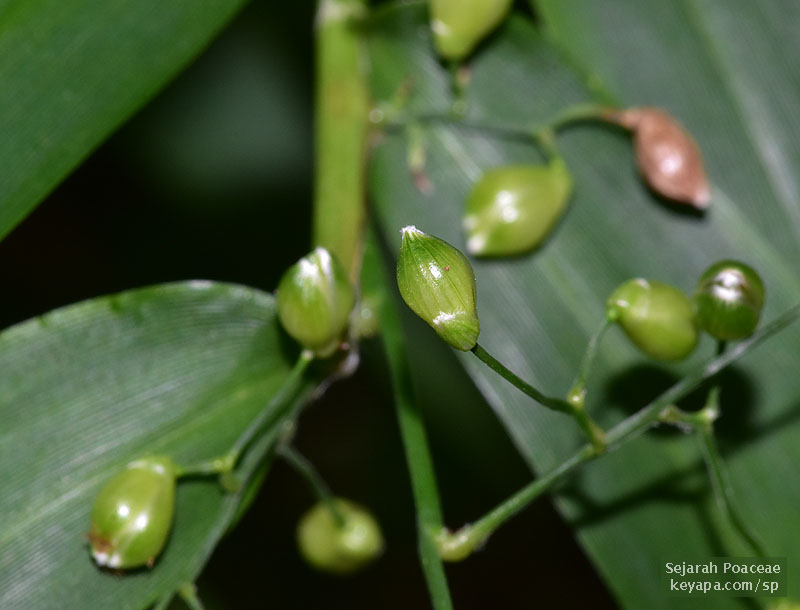
My second botanizing trip the next day took me farther north to the town of Parkland, FL, where I steeled myself to face another onslaught of man-eating mosquitoes. But amazingly enough, this second trip proved much more amenable to my search, not only because there seemed to be a lot less of the insects around, but because the Doris Davis Forman Wilderness Preserve even provided complimentary cans of insect repellent to guests!
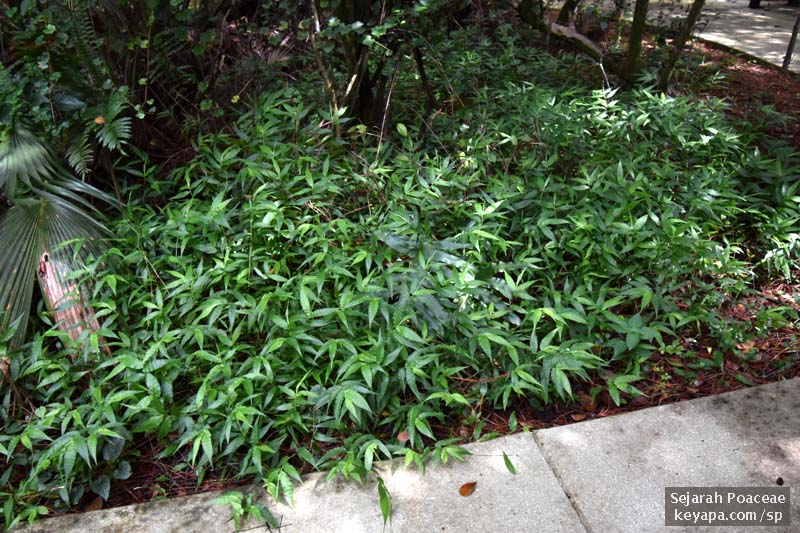
This time my wife came along with me, and we had moved inward a bit into the mass of vegetation when we stopped so I could show her images of L. divaricata that I had taken the day before. I figured we could split up to cover a wider area, but I had never seen the day’s target species Ichnanthus pallens before. My first thought was that it would look similar to the other shade loving grass, and as I pointed out to her the general look of L. divaricata and how she might identity the new species, I suddenly looked down at where we were standing and started chuckling.
“Actually,” I said to my wife, as I pointed down. “It looks exactly like that!”
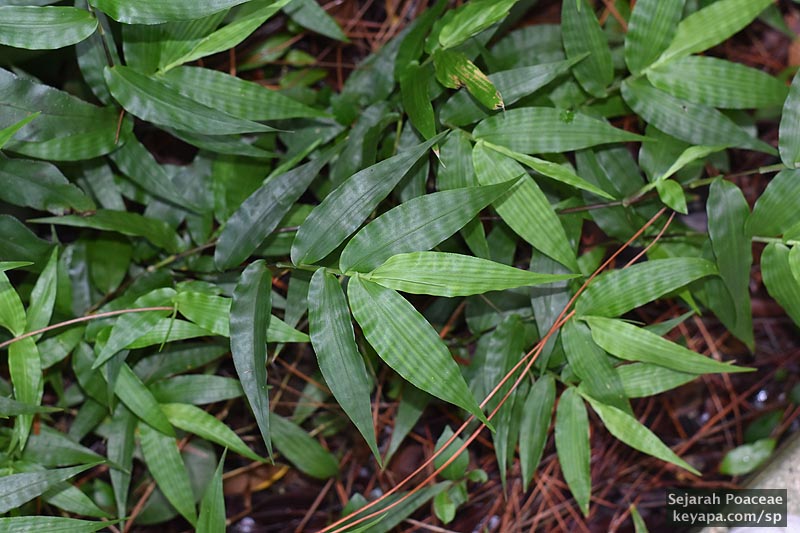
The sides of the path were literally covered with what I immediately took to be Ichnanthus pallens. In fact, there were masses of the grass on either side of the path, which bordered a small gazebo. They did not look too much like bamboos and the elegant L. divaricata, but bore a closer resemblance to Oplismenus species, except on a larger scale.
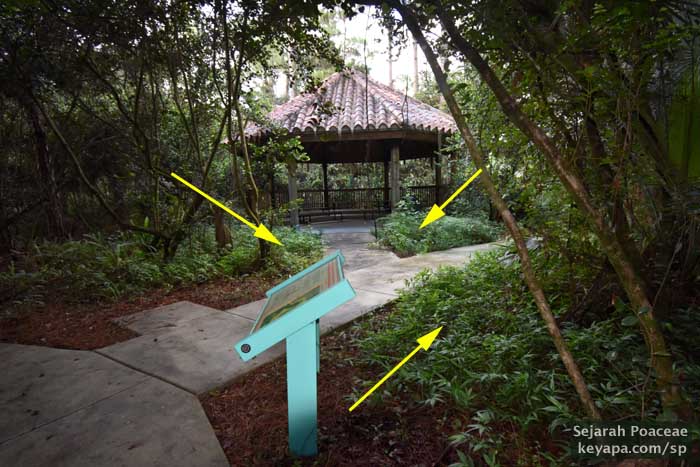
Unlike the native L. divaricata, I. pallens is exotic to Florida, but is found in the Caribbean, Mexico, Central America, and South America. The discovery of the species in Florida is recent, and is the topic of a paper in preparation by Lange, Bradley, & Sadle. The species is locally called “caruzo” and is a C3 grass in the subfamily Panicoideae (Junior et al, 2015).
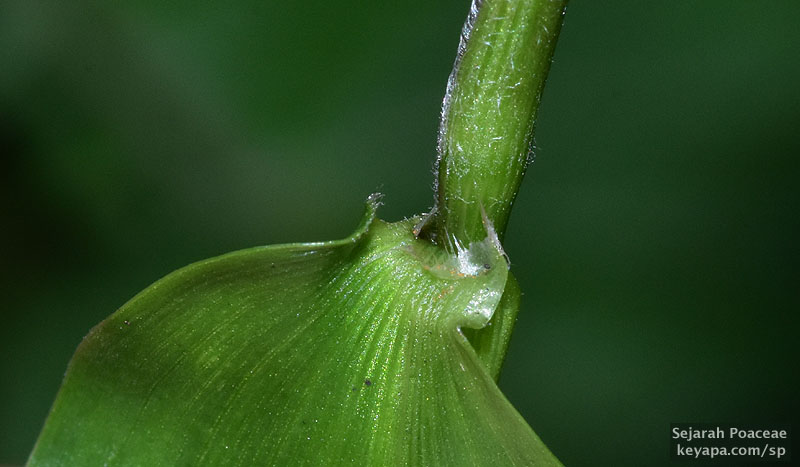
While I took lots of photographs of the cluster near the gazebo, my wife circumnavigated the park, and reported back that this was the only instance of the grass in the entire park. This made me even more amazed, as it paralleled my experience when botanizing for Munroa squarrosa in Colorado!
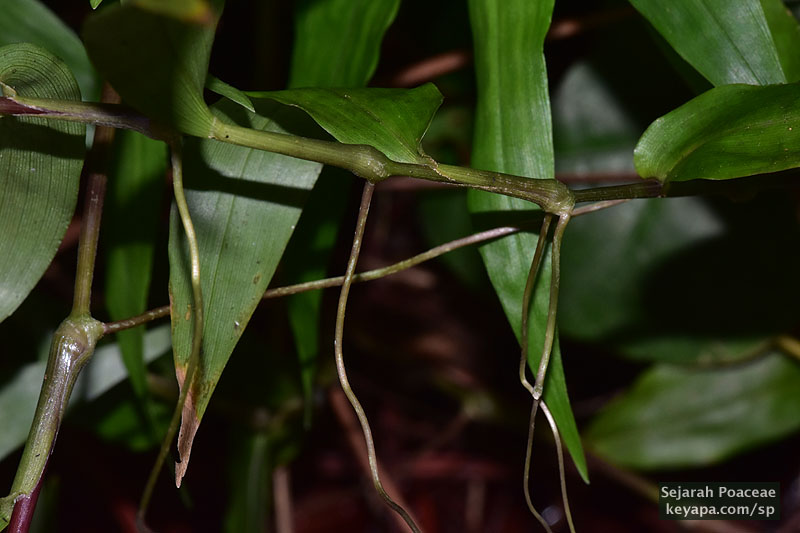
The cluster was most definitely still in the process of rapidly expanding. I mapped the borders and noted that where it was most dense, I could find few other plants. Unlike L. divaricata, which seemed to be able to stand on its own (at least up to a certain height), this species was most comfortable sprawled on the ground, making its way around the area using long roots that sprouted adventitiously from its joints.
Unfortunately, I could not find any inflorescence in the lot, and I could have spent a lot more time exploring its behavior. But I had to be mindful of the time (we had to pass by a few grocery stores on the way home all the way up north), and I soon took leave of the area, happy at least that I had so easily discovered my second target species – and without collecting a lot more mosquito bites!
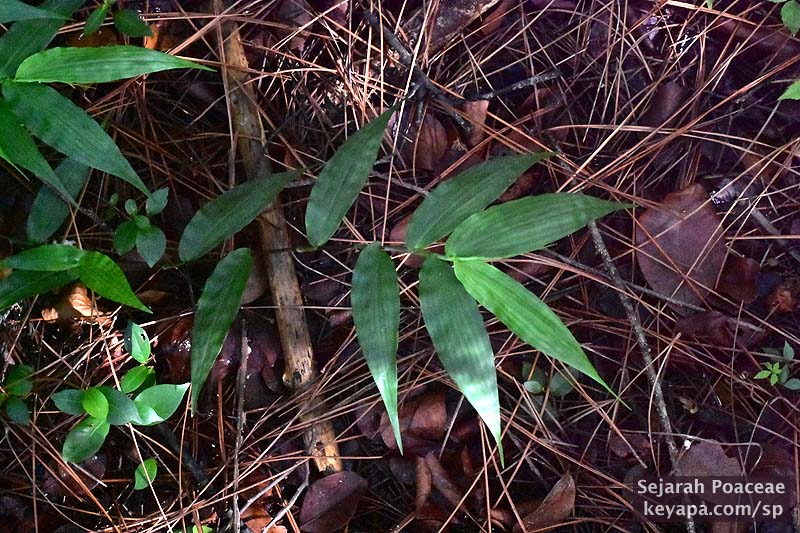
Literature Cited
Junior, L.A. & Oliveira, Reyjane & Leite, Kelly. (2015). Improving microtechniques for processing leaf blades of grasses using Ichnanthus pallens (Sw.) Munro ex Benth. as a model species. Neodiversity. 8. 50-54. 10.13102/neod.81.3.

Leave a Reply